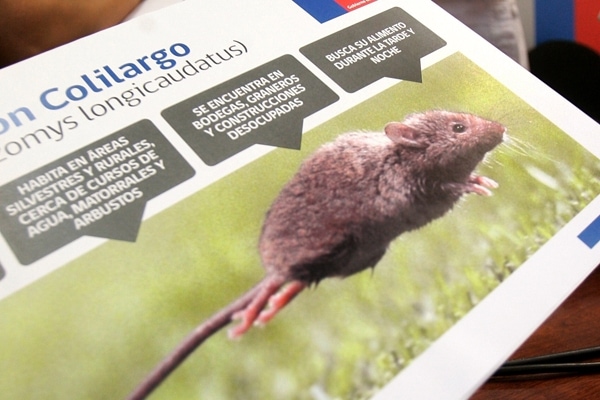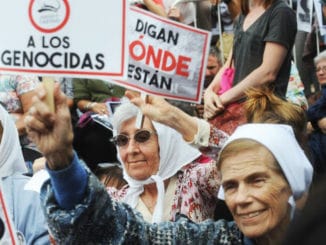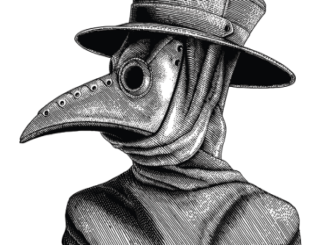
Hantavirus can be transmitted by inhaling tiny droplets contaminated with the virus from deer-mouse droppings and urine
By Mohsin Abbas / The Santiago Times Staff
SANTIAGO —Two students are in serious condition in the Chilean capital after being infected with Hanta, a rodent-borne virus that has so far caused five deaths this year in the country.
Hantavirus Pulmonary Syndrome is an acute, usually severe, infectious disease that can be fatal, present in Chile since the 1990s.
The two boys, a man and a woman, whose identities are kept in reserve, are in a private clinic in capital Santiago, connected to mechanical ventilation and receiving intensive therapy.
This week, in a message on Facebook, the College Institution Teresania of the area of Las Condes requested with “urgency donors of platelets type A, in addition to blood donors of any kind.”
The contagion came after teenagers visited the town of San Carlos in the southern region of Biobío last month.
This year, three fatalities are reported in the country, who were reported to have been infected while working on weed removal in the southern region of Los Ríos.
A 69-year-old man from Arauco, Bío Bío region in west-central Chile was the first hantavirus death recorded in 2017, according to a Bio Bio Chile report.
The last death was a man of 41 years, who was infected while doing his agricultural work in the sector of Punucapa, Valdivia.

More than 18 cases of Hanta virus infection have been registered so far in 2017 in Chile, with the Ministry of Health reiterating its call to prevent Hantavirus contagion.
“Basically, risk behaviors should be avoided, such as going into scrub or collecting wild fruits; as well as take precautionary measures, such as ventilating warehouses, sealing houses to prevent mice from entering, racking enclosures, keeping trash well covered, trimming grasslands, keeping food well-guarded, using tents with flooring, among others,” the Health ministry said in a statement.
During 2016, a total of 51 cases were registered, with a mortality rate of 21.6%; while in 2015, there were 58 cases with a fatality rate of 43.1%. This means that this year, the disease has a lethality of 27.8%.
A similar virus outbreak has also spread across several US states, and Taiwan, where dozens of people have been diagnosed with hantavirus hemorrhagic fever.
What is Hantavirus?
Hantavirus Pulmonary Syndrome is an acute, usually severe, and deadly infectious disease that has been present in Chile since the 1990s.
Hantavirus is carried by certain species of rats and mice that shed the virus in their urine, droppings and saliva. The virus can be transmitted to people when nesting materials or dust contaminated by infected rat or mouse urine, droppings and saliva are stirred up, allowing the virus to be breathed in by humans.
The spring and summer season is conducive to the development of the disease, due to the increased circulation of visitors in fields and forests.
The advance of the virus can cause “pulmonary syndrome” and lead to death.
Studies have allowed to establish in Chile a hundred varieties of the virus present in the field mouse or “colilargo” (Oligoryzomis Longicaudatos).
The disease is spread by:
– Breathing small fresh or dry drops, or air contaminated by saliva, urine or excrement of an infected mouse.
– Ingestion of food or water contaminated with urine, feces or saliva of these rodents.
– Direct contact with excrements or secretions of infected mice (eg, touching mice, alive or dead, with bare hands, direct contact of wounds with mice or their urine, saliva or feces).
– Touch any object where the virus has been deposited (tools, utensils, furniture, clothes) and then bring the hand to the nose, eyes or mouth.
– Being bitten by an infected mouse.
– There is no evidence of virus transmission by insects, domestic animals or livestock. In Argentina, a case of possible person-to-person transmission has been reported, although the mechanism of this transmission is unknown.
– Respiratory infection occurs in closed places with recent presence of mice, so transmission is rare in open places, exposed to wind and sun.

The Symptoms of Hantavirus
The initial symptoms of Hantavirus are very similar to a common cold, which are fever, muscle aches, acute headache and gastrointestinal disease. But later on, kidney and lung complications appear, which in 40% of cases cause death.
Fatigue, fever and muscle aches may be accompanied by headaches, dizziness, chills, nausea, vomiting, diarrhea and abdominal pain. Later symptoms include coughing and shortness of breath. If hantavirus is suspected, people should contact their health care provider immediately and mention any potential exposure to rodents, their nests or their waste.
How to prevent it?
Faced with this new diagnosis of the disease, authorities have reiterated calls for the population to take preventive measures. And although its lethality has fallen during the last decades in Chile, the disease – transmitted by air, when inhaling the aerosols of feces, urine or saliva of the wild mouse colilargo – continues to cause the death to about a third of the infected.
During the summer, the Ministry of Health conducts a strong campaign aimed at people who go on vacation and spend the night outdoors or homes that have been abandoned during the year, so that they take the greatest precautions in order to avoid contact with stool or mouse urine.
Patients with confirmed infections should be admitted to hospitals with ICU beds and often supported with mechanical ventilation between other types of support, while their body fights the virus, as there is no specific treatment.
If the people who present these symptoms are in places of vegetation and wild fauna without having the minimum precautions of protection, they must immediately go to an enclosure of assistance.
Campaign for Camps
As the summer holidays have begun, thousands of people are travelling to rural areas of the country, where historically the greatest number of Hanta Virus in Chile has been concentrated, due to the presence of the so-called “colilarga mouse”, which transmits the disease when inhaling aerosols Of their feces, urine or saliva.
For this, the Chilean health ministry gives a series of recommendations that must be taken into account when they are in these places outdoors:
If you go to the countryside:
– Maintain a sanitary strip of 30 meters around the houses or enclosures, where it is kept clear of garbage and weeds that can be used as food or shelter by the mice. With short grass and holds or sheds outside that perimeter. Also leave out the straw clusters and place them on platforms 20 centimeters high.
– Keep the trash in closed containers and resistant material, as well as drinking water and food not yet consumed.
– If it is necessary to weed, to apply rodenticide products seven days before.
– Seal the possible routes of entry of rodents to buildings with resistant materials (steel, cement), but with systems that facilitate their permanent ventilation.
– Prior to entering places that have been closed, it is recommended to ventilate for 30 minutes, opening doors and windows.
– In enclosed spaces with dust accumulation, a disinfectant solution must be sprayed before cleaning to avoid the formation of aerosols. Surfaces should be wiped with a cloth moistened with this solution: a dilution of 30 ml (two tablespoons) of 10% chlorine in five liters of water is recommended.
– During grooming activities, thick rubber gloves should be worn. Once the work is finished, it is recommended to wash the hands with the gloves placed in a solution detergent or disinfectant, then remove them and wash the hands with abundant water and soap.
– Food or other elements with evidence of having been contaminated by rodents, should be removed in double plastic bag, after spraying with disinfectant solution, and buried no less than 60 centimeters deep.
– Always camping in authorized camping, open places and where there is no evidence of rodents.
– Use tents with floors, completely sealed and clean the area where you want to camp.
– To transit by paths or enabled paths and not to go in places with abundant vegetation.
– Avoid collecting wild fruits or firewood.
Environmental Epidemiological Surveillance
Based on the five confirmed cases in the Bíobio Region, the Seremi de Salud instructed an environmental epidemiological investigation to accurately verify the sites of contagion. This was done through a fieldwork that involves the review of exposed contacts, where it is requested that the risk areas are free from the traffic of people, and it is evaluated if there are residents and focus control is carried out, corresponding to sanitary education to the inhabitants.
One of the first results was the beginning of a sanitary summary against a private individual who disposed of his property as a camping area, without the minimum sanitary conditions for its operation.



